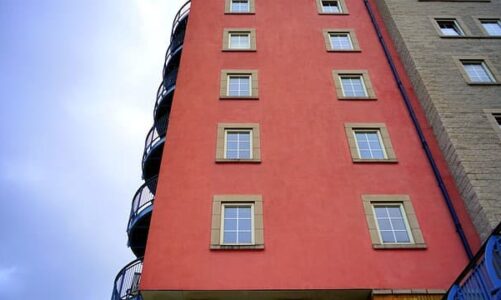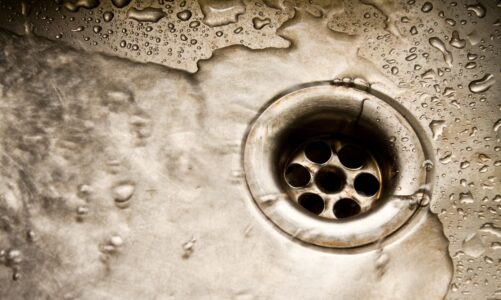After the purchase or construction of a private home, there is an urgent need to create comfortable conditions for living. In cases where it is not possible to connect to centralized communications, it is necessary to equip an autonomous sewer system. In this case the best choice would be a sewage treatment system for a private home, which effectively recycles wastewater to the state of the technical liquid and does not pollute the site.
Wastewater treatment in a private home: septic tank or loos? All these systems are based on different principles of operation. The mechanical method of purification involves sedimentation and subsequent filtration of wastewater. A more modern biological method is based on the processing of waste with the help of a colony of beneficial bacteria with a purification efficiency of up to 98%. As a result of these processes, the output is a technical liquid, which can be used in the domestic needs on the site.
General Information
Comparative characteristics of the most common models of sewage treatment plants differ in a number of parameters:
- total capacity, indicating the maximum volume of effluent the plant can treat in a day;
- maximum salvo discharge is responsible for the volume of liquid taken by the system at one time while using all the sanitary appliances connected to the sewerage system;
- the depth of piping, the greater this parameter, the higher the final cost of the station;
- materials of manufacture of the body, can be concrete, polypropylene or fiberglass;
- the need to connect to electricity, all modern septic tanks are equipped with pumps, aerators and other devices that require a stable supply of electricity for functioning method of disposal, for permeable soil with a low groundwater table choose gravity method, and for impermeable soil and high groundwater – forced discharge of treated liquid;
- Type of housing, selected individually, based on the characteristics of the terrain, there are stations in horizontal and vertical design.
Bacteria
Modern wastewater treatment systems for private homes involves several types of bacteria for effective processing of waste. Aerobic beneficial microorganisms require a constant supply of air into the system for efficient activity, anaerobic bacteria can also work in the absence of oxygen.
Treatment facilities for private homes using several types of bacteria, are able to clean the waste up to 98%, obtaining at the same time a colorless technical liquid output without odor. To understand what kind of sewage treatment plant is suitable for a particular situation, you need to review the options for sewage in a private home.
Septic tanks with anaerobic treatment method
Such systems are based on the filtration of wastewater by mechanical means and process organic compounds through the action of anaerobic bacteria. Wastewater enters the intake compartment through the sewer line coming from the house. The heavy fractions are trapped and remain at the bottom. The liquid then flows into the next chamber with light fractions remaining on the surface. Here, the effluent undergoes a thorough treatment and the large compounds settle out. In the next stage, the liquid enters the third compartment where the organic matter is processed by anaerobic bacteria.
After that, the clarified liquid is removed from the septic tank through the pipes to the filtration field, which consists of several layers of crushed stone and sand. This type of septic does not require power from electricity and is cheaper relative to energy-dependent models.
Septic tanks with aerobic method of treatment
Overview of wastewater treatment systems in a private home, equipped with aerators. In these systems (VOC) at the same time involved several ways of processing household waste. Cleaning is carried out in several stages, combining mechanical action, anaerobic and aerobic. The sewage treatment plants require connection to a power grid, but are completely silent. In case of power outages go to the mode of operation of a simple septic tank of the accumulation type.
Autonomous biological treatment of sewage and domestic sewage for installation in a private home does not require the additional organization of the filtering fields. Wastewater is purified up to 98% and discharged directly into the ground with a special drainage ditch. There are many modifications on the market, where the spent sludge can be pumped by yourself, without resorting to the services of sewage trucks and without the need to provide access roads to the station.
Principle of operation:
Domestic wastewater enters the reception compartment through the sewage pipe coming from the house. It undergoes mechanical treatment – sedimentation. Large compounds remain at the bottom, where they are processed and dissolved by anaerobic bacteria.
The liquid then enters the aeration tank, where oxygen is continuously supplied.
The fine air bubbles break down the debris into smaller particles. The oxygen-rich medium reacts with the activated sludge, thereby triggering the necessary oxidative processes.
After that, the liquid flows to the secondary settling tank, where the waste sludge settles to the bottom and the water is clarified. From here, it is discharged into the drainage ditch by the selected method of discharge.
From a special compartment – stabilizer, you need to regularly pump out the spent sludge, which can later be used as a useful biological fertilizer on the site.
What is better to choose: LOS or septic tank?
- safety for the environment;
- high level of effluent purification, reaching 98%;
- complete absence of any unpleasant odors;
- possibility of disposal of recycled liquid directly into the soil;
- no need for a regular call of sewage trucks and additional costs for the maintenance of the station.
The option of sewerage with filtration fields is difficult to implement in clay soil, while VOC can be installed on any site, without restrictions. In areas with a high level of groundwater cannot be arranged filtration fields, so the only way out would be to install an aerobic septic tank with a forced drainage system.



